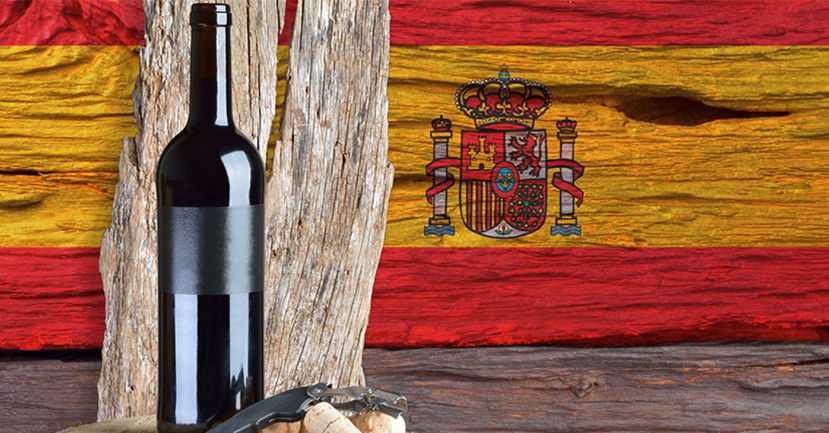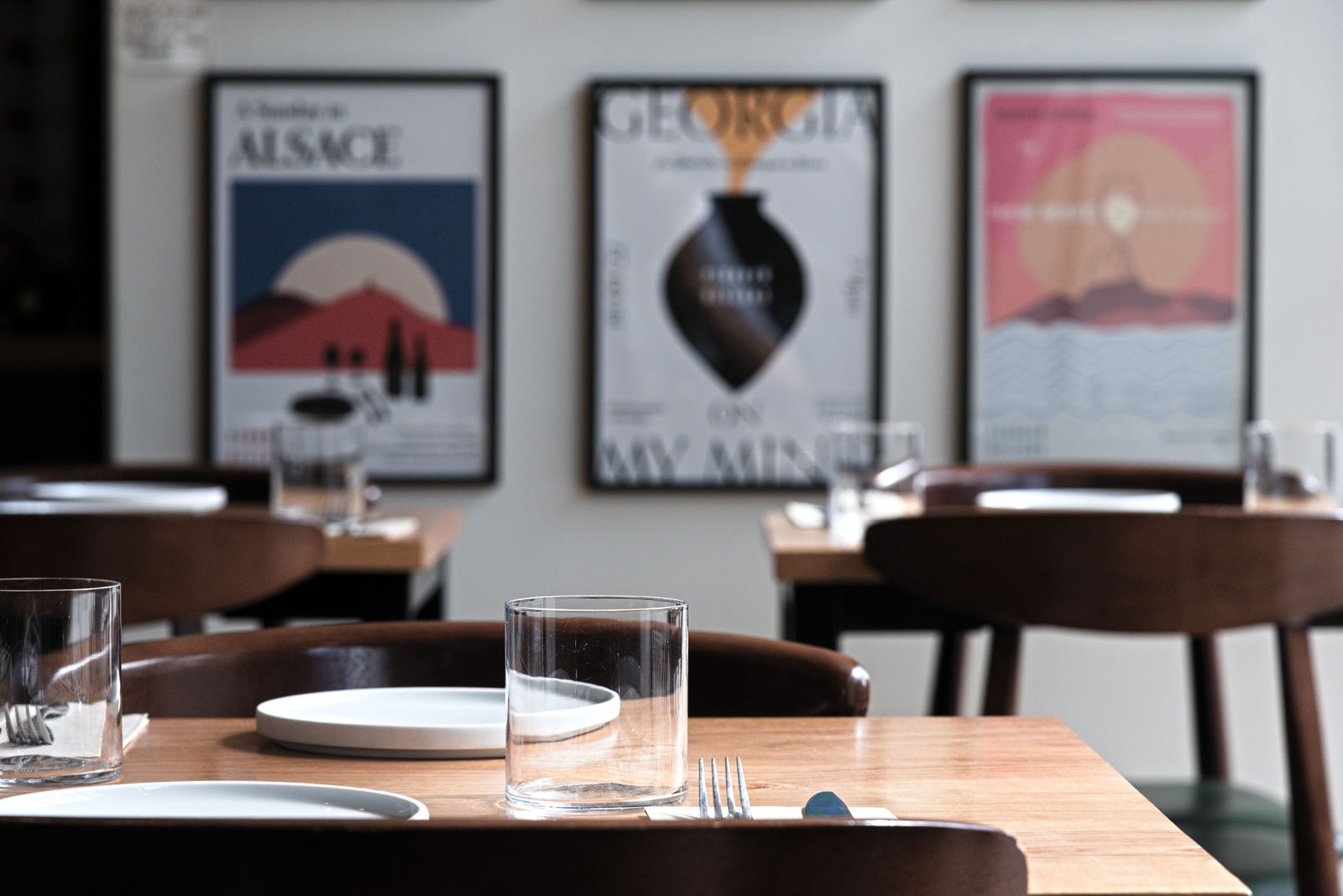BLOG
How to Pair Spanish Tapas and Wine
Justin Martindale MW
Wine Culture
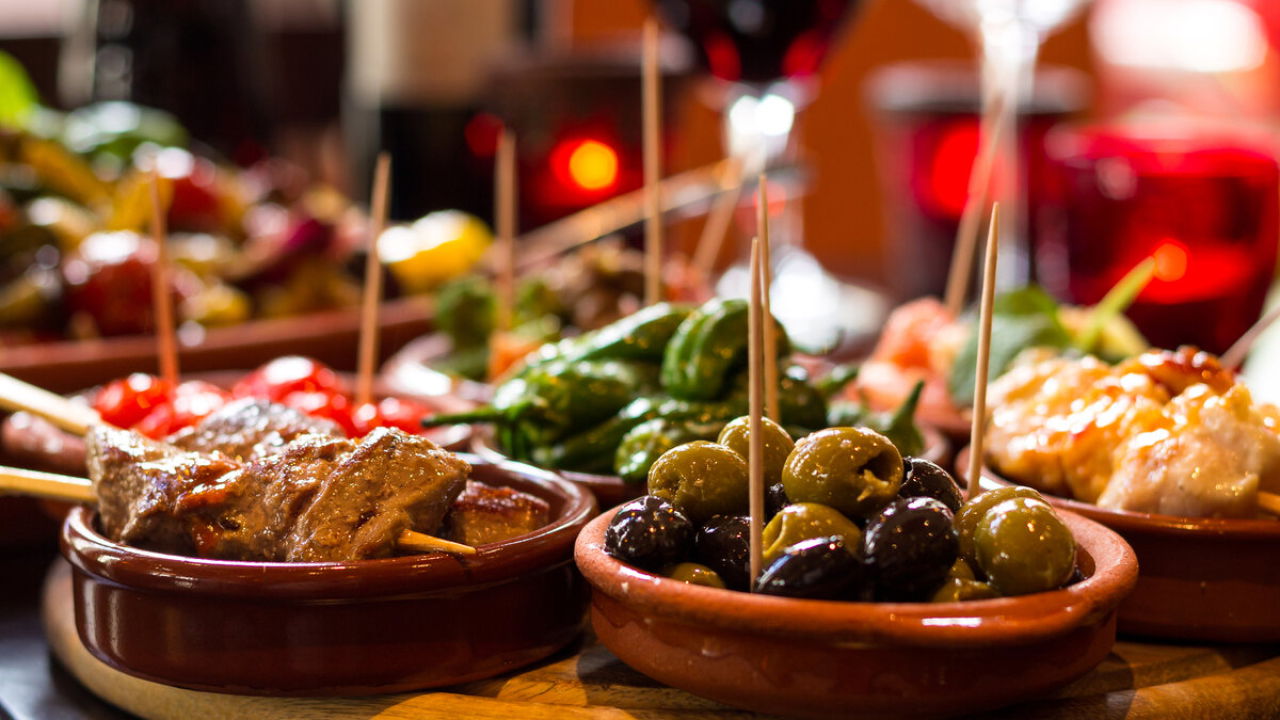
There is a man in Logroño’s Calle Laurel who makes garlic mushrooms. It’s the one and only thing on the menu, not that there is a menu. Griddled mushrooms, served on toast, drowning in garlic butter with a small slice of prawn on top. They are miraculous. I think about him and this bar often, as I lurch between life crises, as I think he may possibly have discovered the ultimate secret to a life of happiness and contentment. For me, this dish in this place is the epitome of a cuisine that has stolen the hearts of so many people across so many borders. Tapas, or pintxos if you’re in Basque country, come in all shapes and sizes, but the best ones are celebrations of outstanding produce, simply cooked, that evoke a gastronomic and cultural heritage in each small bite.
The history of tapas depends on who you ask. Some say it started with a visit to a bar in Cádiz by King Alfonso XIII. Cádiz is a hot, dry city in Andalucía and legend has it the bartender covered the king’s drink with a piece of ham to keep the dust out. ‘Tapa’ literally translates as ‘lid’ or ‘cover’ in English. Another legend goes that it was Alfonso the Wise in the 13th century, who was told by his doctor that small plates of food accompanied by a small glass of wine would aid his recuperation from illness. Once recovered, the wise king decreed that all taverns in Castilla should serve a snack alongside their wines. The third story is altogether less romantic; that an entrepreneurial bartender discovered he could get away with serving really terrible wine, as long as it was accompanied by really strong meats and cheeses. Supporting evidence for any of these tales is scant, so it seems we may never know for sure. But whatever its origins, these small plates have long been part of the gastronomic fabric of Spain. Here we’ll explore five of the classics, paired up with a selection from the country’s amazingly versatile wines.
Pimientos de Padrón with DO Rueda
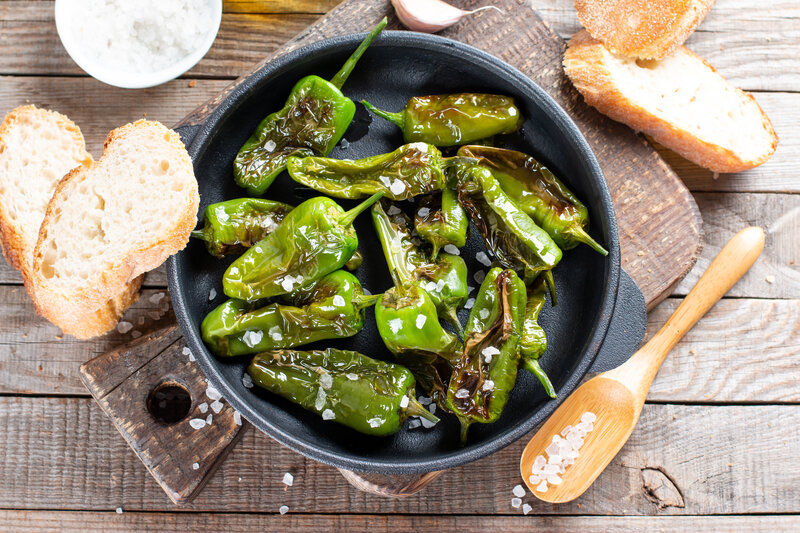
Hailing from the eponymous municipality of Padrón in Galicia, this small green pepper is traditionally fried in olive oil until it blisters and softens, then liberally seasoned with sea salt. Whilst they might look like a plate full of spicy regret, they’re actually really mild in heat, but packed full of this beautifully intense herbaceous flavor. Legend has it that every once in a while, you’ll get a really spicy one, but having munched my way through a statistically meaningful amount of these peppers over the years, I’m increasingly convinced this is an old wives’ tale.
These go beautifully with a modern, unoaked Verdejo from Rueda. This variety is highly reminiscent of Sauvignon Blanc; it has the same light body and bracing acidity that cuts through the oiliness of the peppers, and a similar herbaceous, grassy aroma profile that naturally complements the flavor of the dish. Check out Marqués de Riscal Rueda for a great example of this wine – this famous Rioja winery actually pioneered this style of modern Rueda in the 1970s.
Pulpo a la Gallega with DO Rías Baixas
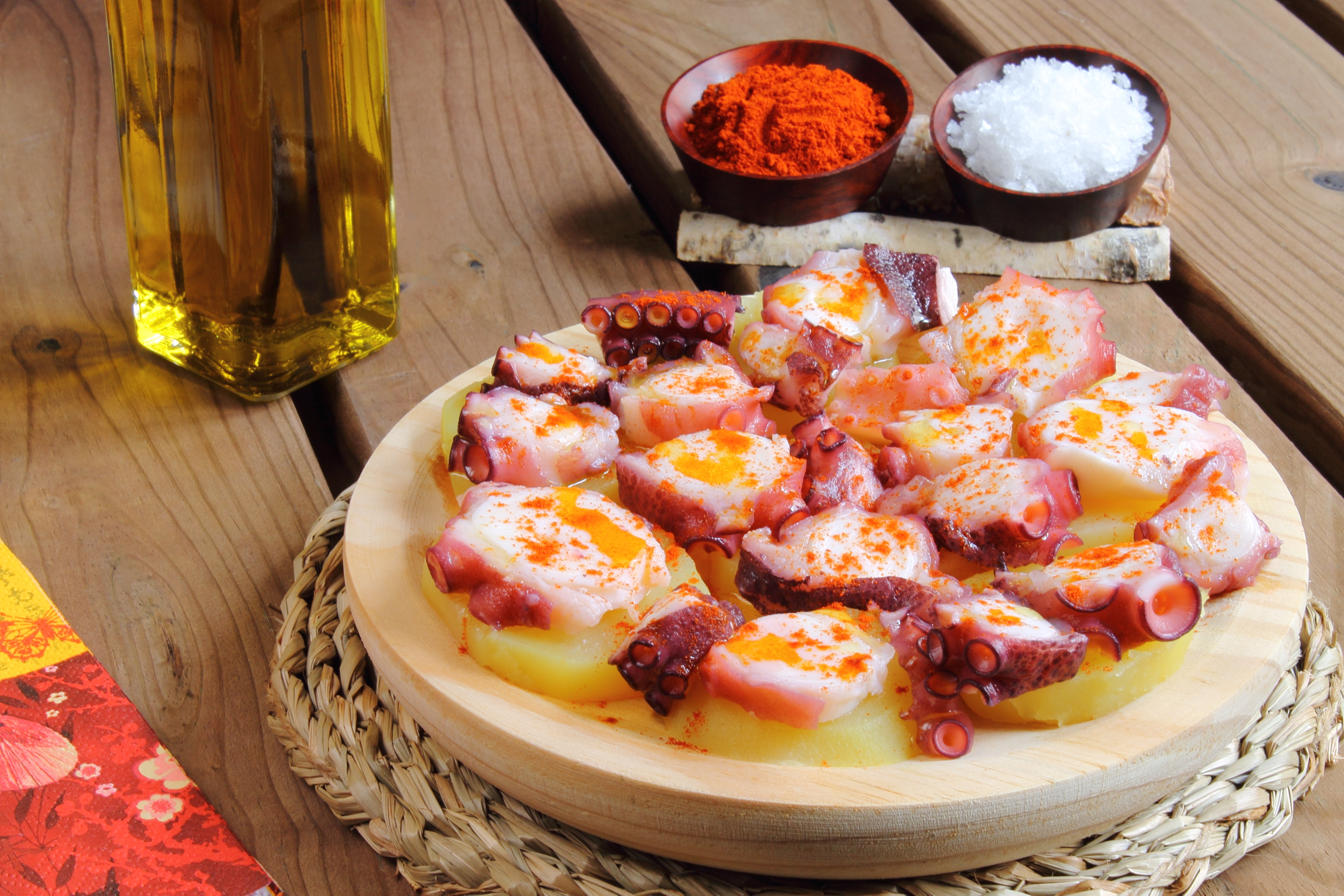
This is probably the most famous tapas dish of Galicia, where it is known as Polbo á Feira. It’s another wonderfully simple dish consisting of steamed octopus, sliced and served with a drizzle of extra virgin olive oil and perhaps a dusting of smoked paprika. Galicia is a mecca for seafood lovers. The markets of Santiago de Compostela brim with amazing produce, from oysters, clams and lobsters, to local delicacies such as palometa roja and the delicious velvet crabs known here as nécoras.
The local wine from Rías Baixas, made from the Albariño grape goes well with all of them. It’s a great example of one of those tropes that holds true across so many gastronomic regions of the world: if you get stuck with food and wine pairing, match the local food with the local wine and it’s uncanny how often they go together. Albariño is a bright, crisp and fresh white wine with an intense green apple and citrus flavour, accompanied by a bracing acidity that lends the wine an almost saline minerality. There are different styles of wine from this grape; for this one you’ll want an unoaked version to maximise that freshness that makes it pair so well with seafood. Martín Códax makes a benchmark style that is usually fairly easy to get hold of, but the general standard of wine from this region is really good, so don’t be afraid to pick a different one up if you see it.
Tortilla Española with DOCa Rioja Blanco
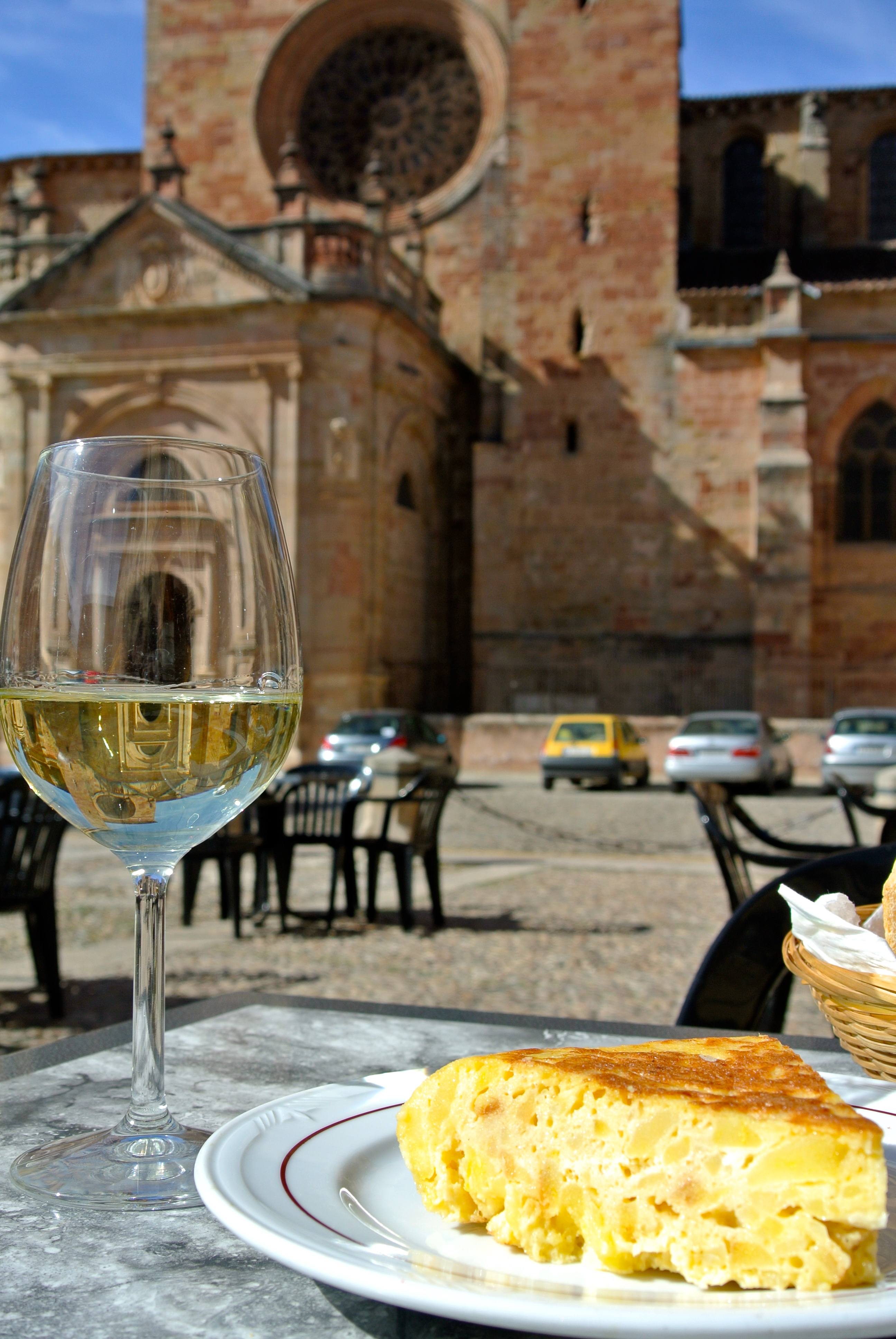
This Spanish omelette is one of the most authentic and iconic tapas dishes of Spain. You’ll find it served in bars up and down the country, or in picnics and lunchboxes served hot or cold. For this dish, four relatively humble ingredients of egg, potato, olive oil and sometimes an onion, combine to create one of the world’s genuinely great egg dishes. It has this amazing creamy texture and richness, coupled with a kind of comfort food blandness that makes it incredibly moreish.
A good, traditional white Rioja served with this dish makes one of my all-time favorite pairings. White Rioja is one of Spain’s unsung heroes and often overshadowed by its more famous red counterpart. It’s made from the Viura grape variety, that on its own rarely has a huge amount of flavor, but comes to life in this region where it traditionally spends some time fermenting and maturing in good quality French or American oak. The oak gives the wine a beautiful softness that matches so well to the tortilla, and the subtle vanilla flavours flavors pair wonderfully with the dairy character of the dish. Just make sure you get a traditional, oaked style – Marqués de Murrieta, López de Heredia and Bodegas Navajas all make good examples.
Chorizo al Vino with DO Ribera del Duero
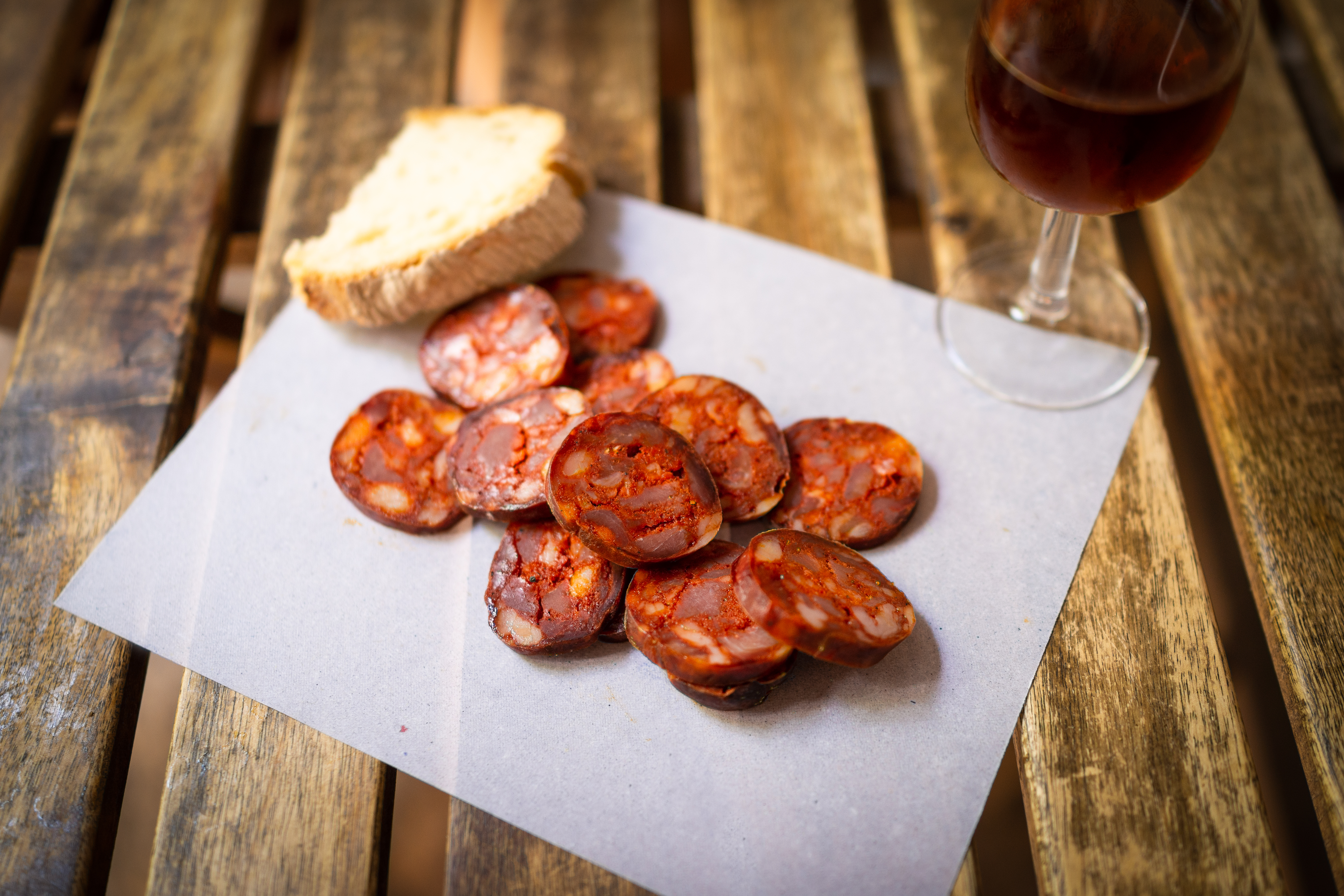
This is another really authentic dish made by braising cooking chorizo in red wine so the sausage can infuse with the liquor as it reduces. You end up with an incredibly intense, spicy dish that can be served on its own or with some crusty bread to mop up the juices.
A good rule of thumb when it comes to food and wine pairing, is to try and match the intensity of the dish with the intensity of the wine. This chorizo is packed full of flavor, and so it needs to pair with a big red wine that can stand up to it and won’t get overwhelmed. Ribera del Duero made from Tempranillo, known locally as Tinto Fino, is the perfect choice here. It has a darker fruit profile than those made from the same grape in nearby Rioja, and often grippier tannins and higher acidity with a punchy 14%+ alcohol content. These wines often spend a good amount of time in oak which adds a spiciness that complements the food, while the sausage mellows out the grippiness and structure of the wine. This region is making some of Spain’s most exciting red wines – examples from Hacienda Monasterio, Emilio Moro or Pago de Carraovejas would all work brilliantly.
Croquetas with Cava DO
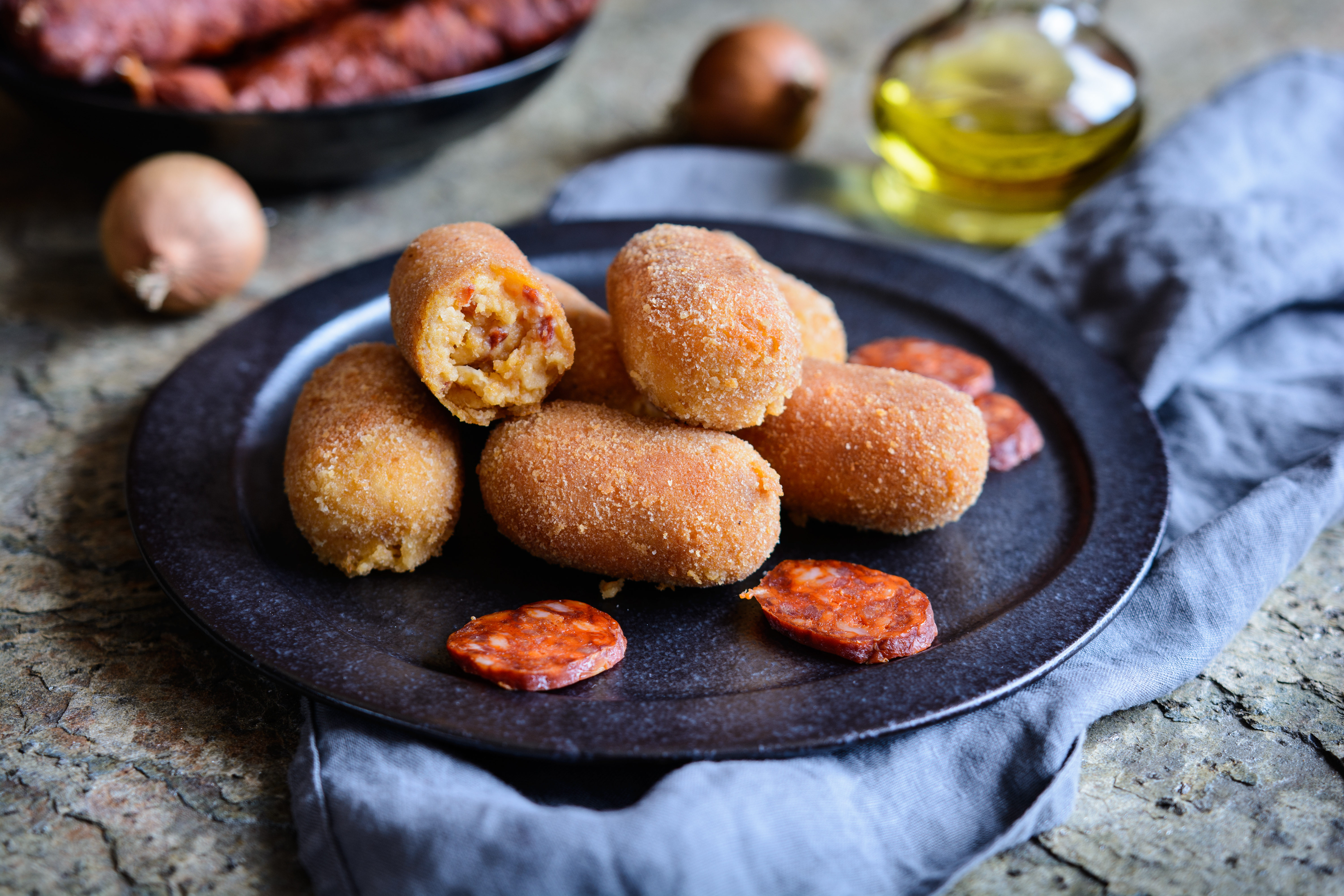
Croquetas are a staple of tapas bars right across Spain. They consist of a crispy shell, filled with a thick, creamy béchamel sauce to which various other meat, fish or vegetable flavors and fillings can be added. A good croqueta is all about the crunchy exterior, followed by a light but flavourful, creamy interior that is warming and comforting and creamy and delicious.
Anything deep-fried has a natural affinity to bubbles, and a good Cava can compete with the best sparkling wines from anywhere in the world. Cava is unusual in that it can be produced from a number of different Spanish regions, but in practice the vast majority comes from Penedès in Catalunya. Cava is traditionally made from the local grape varieties Parellada, Macabeo (the same as Viura in Rioja), and Xarel·lo, but today you may find ones that use Chardonnay and Pinot Noir as in Champagne. The bubbles and the high acidity combine to cut through the fattiness of this dish and the yeasty, brioche notes of the wine go so well with the soft, creamy filling. A good quality Reserva or Gran Reserva Cava are the ones to look out for, or if you see it, the rare but outstanding ‘Paraje Calificado’ designation.



